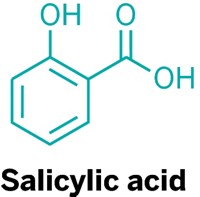Advertisement
Grab your lab coat. Let's get started
Welcome!
Welcome!
Create an account below to get 6 C&EN articles per month, receive newsletters and more - all free.
It seems this is your first time logging in online. Please enter the following information to continue.
As an ACS member you automatically get access to this site. All we need is few more details to create your reading experience.
Not you? Sign in with a different account.
Not you? Sign in with a different account.
ERROR 1
ERROR 1
ERROR 2
ERROR 2
ERROR 2
ERROR 2
ERROR 2
Password and Confirm password must match.
If you have an ACS member number, please enter it here so we can link this account to your membership. (optional)
ERROR 2
ACS values your privacy. By submitting your information, you are gaining access to C&EN and subscribing to our weekly newsletter. We use the information you provide to make your reading experience better, and we will never sell your data to third party members.
Biological Chemistry
Blooming’s Sweet Spot
Biologists unravel the role of trehalose-6-phosphate in triggering the onset of flowering in plants
by Sarah Everts
February 11, 2013
| A version of this story appeared in
Volume 91, Issue 6
Flowering is the salient goal of all higher plants, and this important process is controlled by dozens of genes and a handful of hormones. Plant scientists in Germany have now figured out how one molecule, a sugar called trehalose-6-phosphate (T6P), is essential in triggering the onset of blooming (Science, DOI: 10.1126/science.1230406). “There’s not one definitive switch in plant flowering,” explains Markus Schmid of the Max Plank Institute for Developmental Biology, who led the research. The redundancy ensures that flowering will commence even under less than ideal environmental conditions, Schmid notes. That said, T6P is among the most important flowering cues, he adds. Schmid and his team found that high levels of T6P indicate that a plant has enough energy reserves to commence the metabolically expensive task of flowering. The researchers also observed that in Arabidopsis thaliana, a small flowering plant commonly used in plant biology studies, T6P activates production of a key protein. The protein then travels from the leaves to the growing tip of the plant—called the meristem—to stimulate flowering.





Join the conversation
Contact the reporter
Submit a Letter to the Editor for publication
Engage with us on Twitter